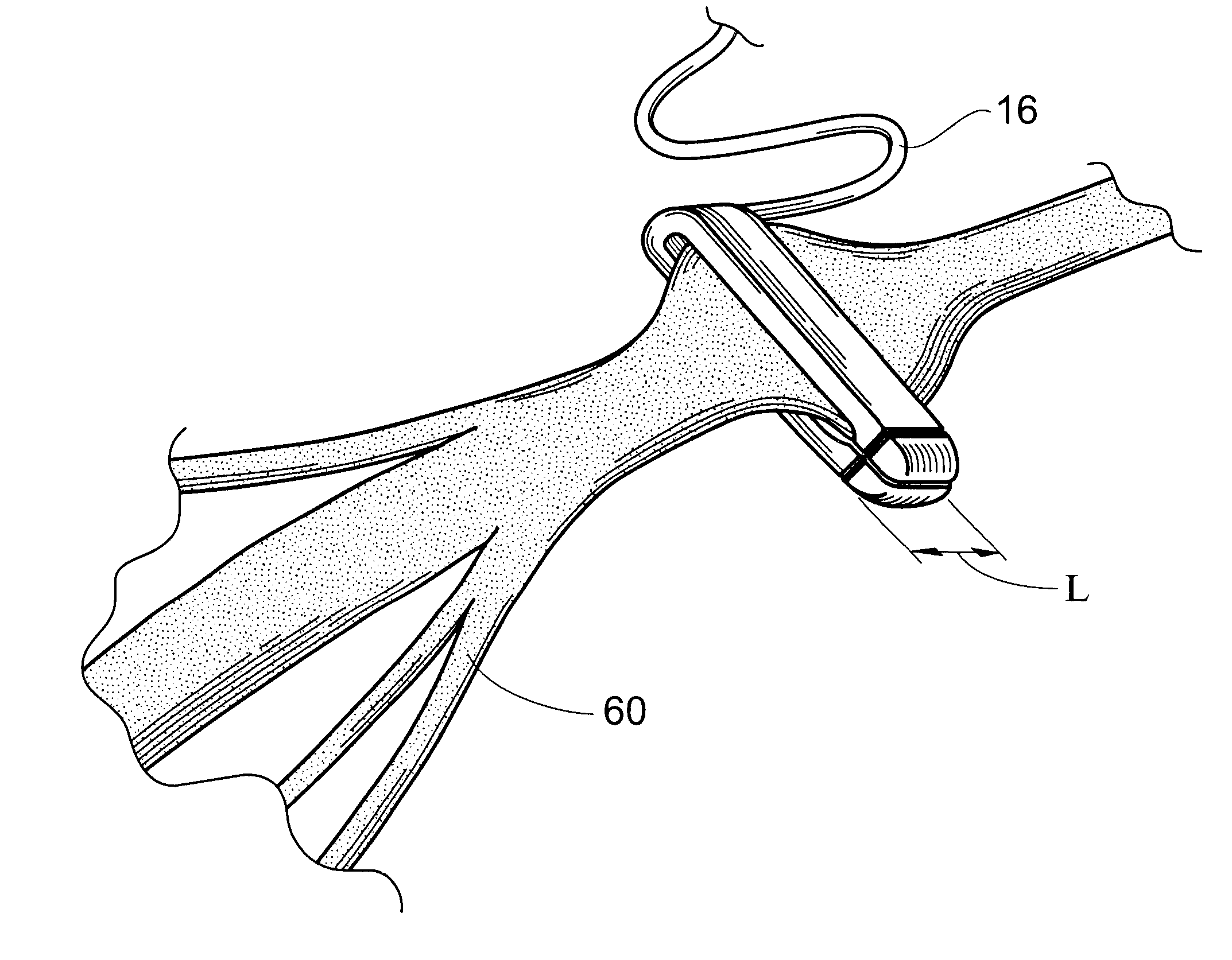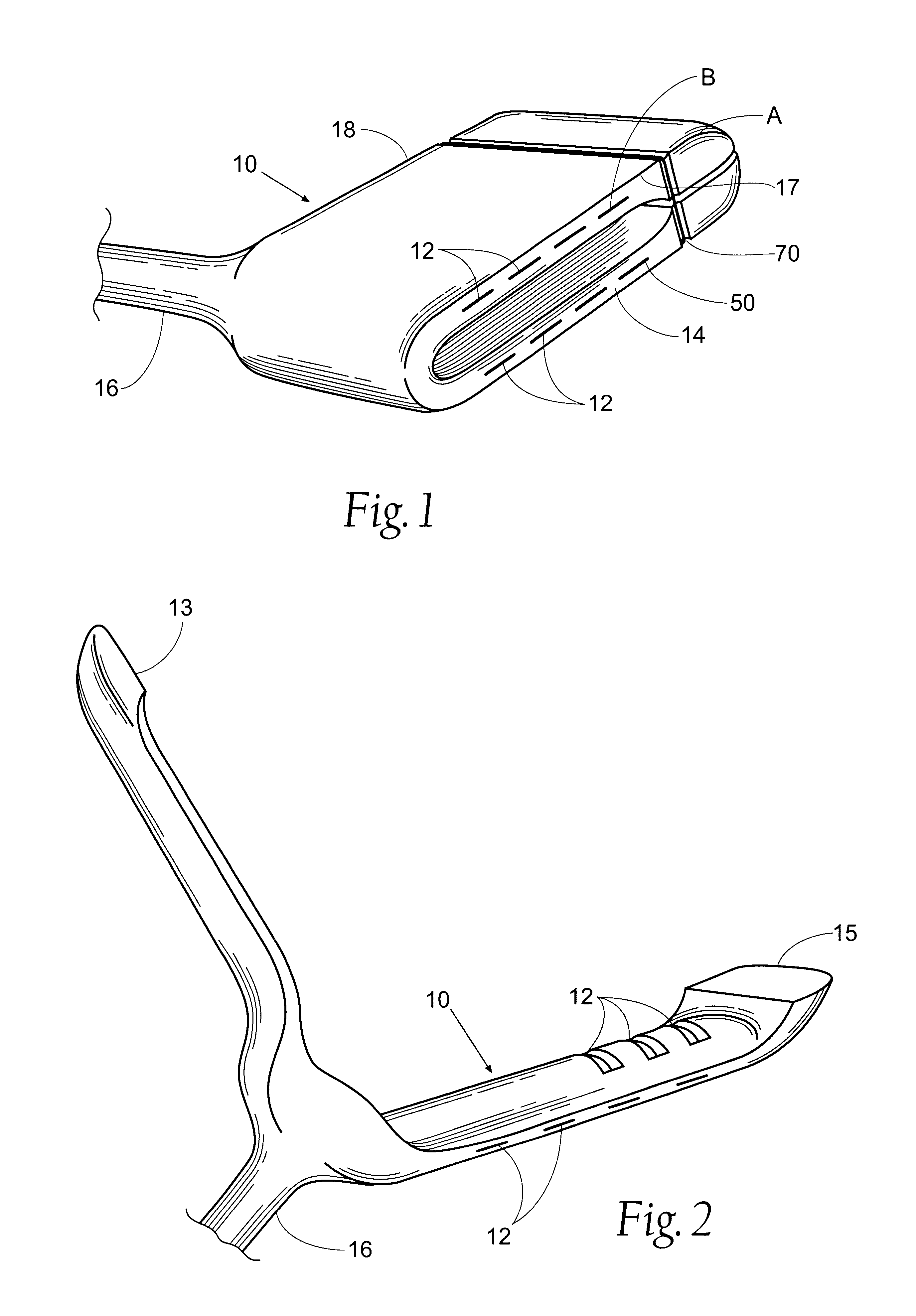Flat interface nerve electrode and a method for use
a nerve electrode and interface technology, applied in the field of soft tissue cuffs, can solve problems such as nerve flattening or other shape changes, and achieve the effect of significant flattening over time, without damage to the subject nerv
- Summary
- Abstract
- Description
- Claims
- Application Information
AI Technical Summary
Benefits of technology
Problems solved by technology
Method used
Image
Examples
example ii
FINE electrodes were also implanted chronically on the sciatic nerve of 40 rats. FINEs of three different wall thickness, t in FIG. 4, (FIG. 2), were implanted for 1, 7, and 28 days and compared to sham implants. The thicker the wall thickness, the greater the force applied to the nerve. Nerve physiology was assessed weekly by measurements of the footprint during normal gait. Only the FINE with the greatest wall thickness produced any changes in the nerve physiology. The changes were significantly different (p<0.05, two-tail t-test of the mean) from the sham trials only between 1 and 14 days post-implant and had recovered by 21 days post-implant. Measurement of nerve geometry demonstrated that all three FINE designs significantly reshaped the nerve and fascicles compared to sham (p<0.05, Wilcoxon Rank-sum test of eccentricity measurements).
The histology of sham trials was not different than the histology from nerves implanted with the smallest wall thickness FINE. The FINE with the ...
PUM
 Login to View More
Login to View More Abstract
Description
Claims
Application Information
 Login to View More
Login to View More - R&D
- Intellectual Property
- Life Sciences
- Materials
- Tech Scout
- Unparalleled Data Quality
- Higher Quality Content
- 60% Fewer Hallucinations
Browse by: Latest US Patents, China's latest patents, Technical Efficacy Thesaurus, Application Domain, Technology Topic, Popular Technical Reports.
© 2025 PatSnap. All rights reserved.Legal|Privacy policy|Modern Slavery Act Transparency Statement|Sitemap|About US| Contact US: help@patsnap.com



